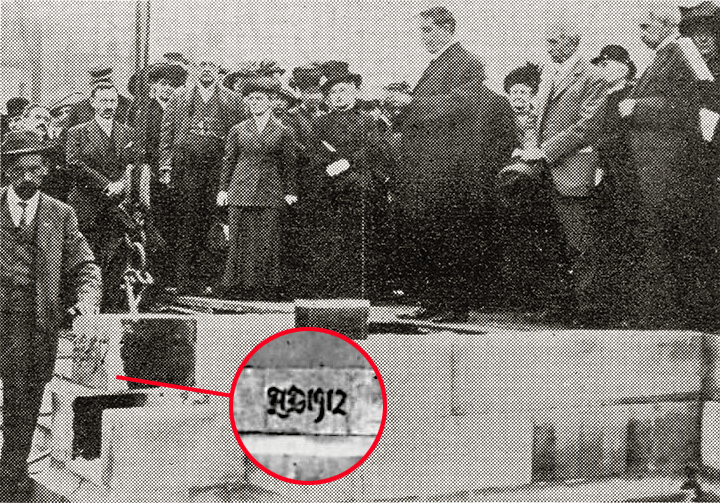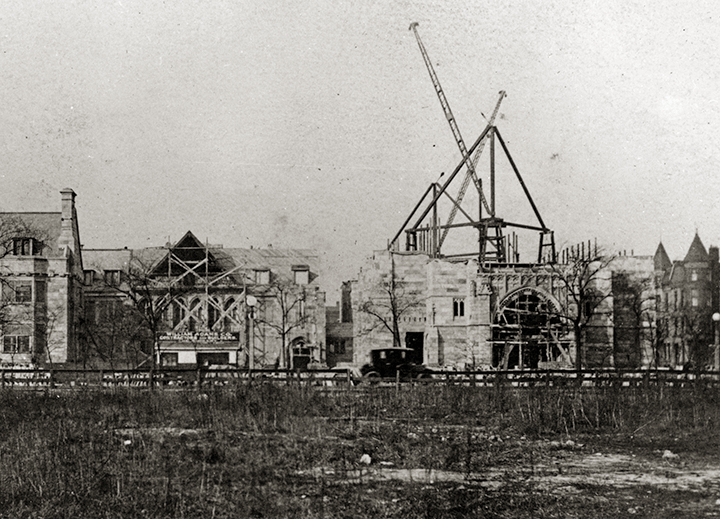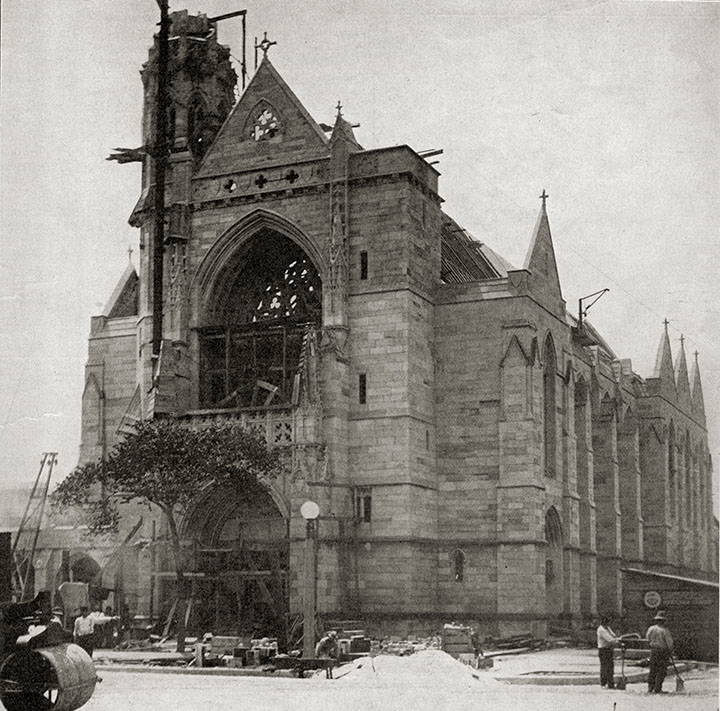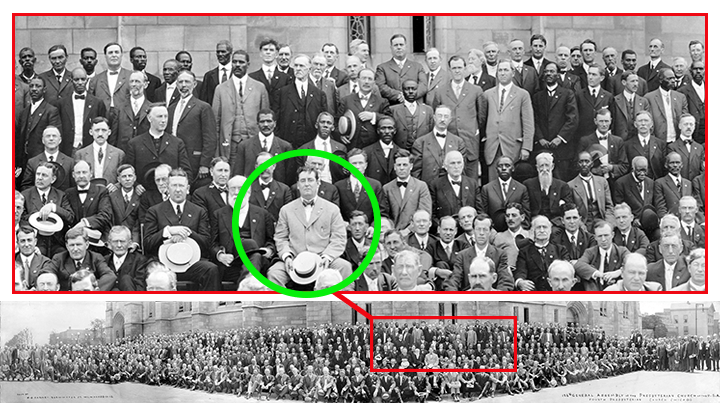“Expect great things from God. Attempt great things for God.”
—John Timothy Stone
Although John Timothy Stone had resisted Fourth Church’s initial call, he soon recognized the congregation’s ambition matched his own, and he agreed to become the church’s seventh pastor as 1909 began.
He announced his arrival in May through a yearlong whirlwind of evangelism and activity—expanding the Men’s Club and Young Women’s Club, starting a Boys’ Club and a Girls’ Club, and energizing an “invitation committee” dedicated to personally inviting men and boys from the neighborhood into the church—all while searching for a new location that could house the hundreds of new members that Stone expected to add each year.
In February of 1911, that location was identified, and it would prove to be the most defining and enduring decision of Stone’s tenure. The congregation purchased a plot on the corner of Delaware Place and Lincoln Parkway (which had formerly been called Pine Street and is now Michigan Avenue), not terribly far from their current building at Rush and Superior but in the opposite direction of what was then the center of the city.
Some in the congregation opposed the new location on those grounds, but the decision would prove prescient when the city instead came to the church. The opening of the Michigan Avenue Bridge in 1920 quickly transformed the neighborhood around the church, paving the way for it to become the “Mag Mile” that we know today.

On September 17, 1912, Pastor John Timothy Stone (standing, center) presided over the laying of the cornerstone, which remains to this day just to the right of the main steps on Michigan Avenue. The cornerstone is visible at lower left, waiting to be lowered into position; the inset photo, taken after the church was completed, shows the “AD1912” that was carved in the stone.
However, while the area around the new location was underdeveloped, it certainly was not as destitute as is sometimes imagined. Many of the city’s wealthiest residents (Rockefellers, McCormicks, Farwells) had mansions within a handful of blocks of the church, even as boarding houses and “furnished rooms” made up the majority of the neighborhood. Instead, the church sought to occupy what one later commenter described as a “median line between Chicago’s wealthiest and one of its poorest residence sections.”
It wasn’t always successful in bridging this divide—the congregation was admonished by one sociologist as a “Millionaires’ Club”—and Stone would occasionally preach sermons demanding that members reach out into the community. But there was a frequently articulated desire that this new building would serve the community more than it would serve the congregation.

A view of the church construction in progress, taken from the site of the current John Hancock building on February 17, 1913. The steel framework over the sanctuary is a construction crane; the eventual roof line was much higher.
After construction began in 1912, the church also found itself thrust into the national spotlight when John Timothy Stone was unexpectedly elected as Moderator of the Presbyterian Church in the USA in May 1913, despite not even appearing on the initial ballot! After the candidates on the ballot had been announced, a fellow General Assembly delegate made a surprise nomination from the floor, soon leading to “a revolution in favor of the man who did not aspire to the honor.”

The sanctuary stonework was largely completed when this photograph was taken in late summer 1913, although the roof and windows still needed to be installed.
Stone’s one-year term as Moderator was set to conclude with Fourth Church hosting the next year’s General Assembly, so it soon became a race against time to complete the gorgeous building designed by Ralph Adams Cram and Howard Van Doren Shaw before delegates began to arrive from across the nation.
Amazingly, the congregation held its first worship service in the new sanctuary on May 10, 1914, less than two years after construction had begun and only eleven days before they welcomed the General Assembly to Chicago.

Pastor Stone (circled in the inset above), outgoing Moderator of the General Assembly, was at the center of the more than 800 delegates who posed for a group portrait outside the new church on Delaware Place less than two weeks after the dedication in May 1914. In the 5-foot-long panoramic photo (bottom) the future Hancock site is at far left and the future Gratz Center site at far right; the bowing of the building is due to the panoramic camera used to capture the image.
Although construction had gone almost 50 percent (!) over budget, the congregation was able to finance the new building without going into debt thanks to Stone’s development of a new system of giving called weekly pledging and, once more, thanks to the generosity of the McCormick family.
But while the cost had been great, the hopes for the church were greater still. As Thomas D. Jones, Chair of the Building Committee, famously remarked during the dedication ceremony, “Whether the expenditure which has been made here . . . shall prove justified, time alone can answer. And the answer will be in terms of service, the lives lived here, and the spirit that shall go out from here and enter into the life of the community.”
The church had an immensely popular pastor and a brand-new building in a rapidly transforming and flourishing area of the city. Indeed, by 1920 the church had grown to more than 2,000 members, which meant Stone had tripled the church’s membership in his first decade on the job. This growth was in large part due to the church’s ongoing evangelism among youth and young adults in the neighborhood, a topic to which we will return in the next chapter.
• • •
< Back to Part 2 • On to Part 4 >